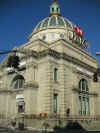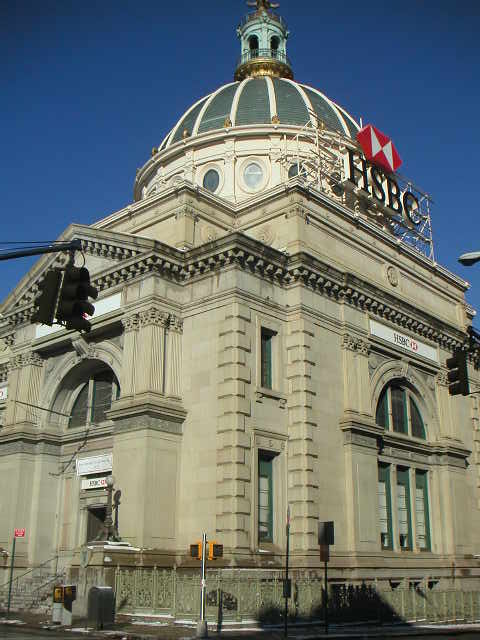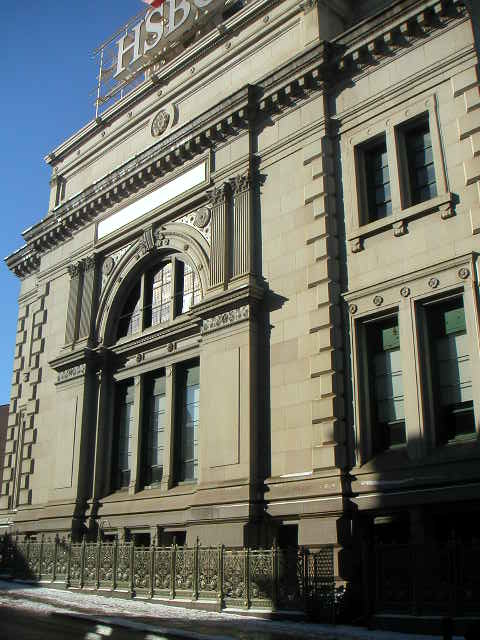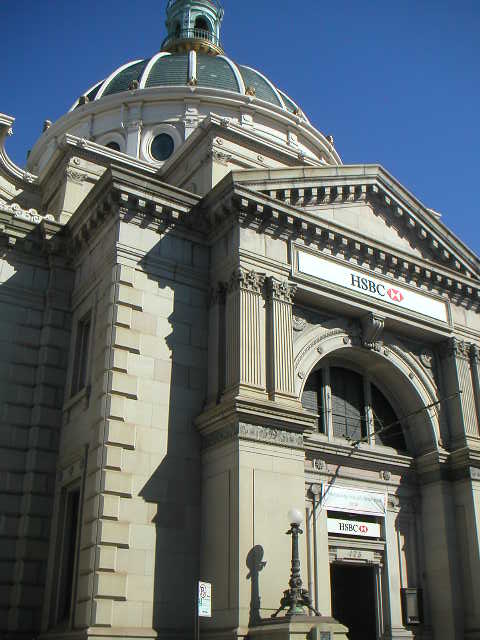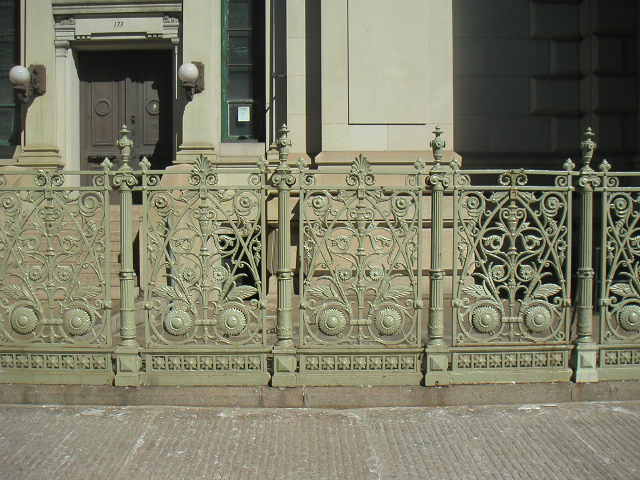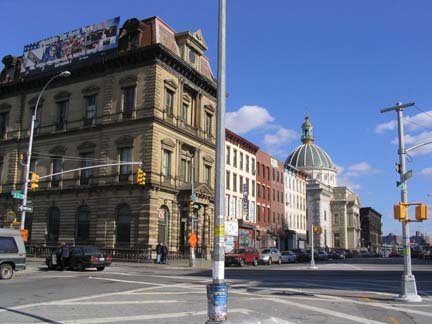|
No good has ever come out of going
down into a church basement, at least by the fifth grade I thought
so. I was raised a catholic and I attended catholic school from
kindergarten through seventh grade. As a result of my reverent
education I was no stranger to the Lord, his church, and the holy
dungeon of academic purity hidden beneath it. Because of the small
size of my school, often times inflammatory classes, such as Sex Ed.
or Music, were held underneath the church in the basement. It was
during these alarming sessions that all the boys and girls from the
fifth grade were gathered together to watch a long series of
educational videos where each tape was more advanced, and therefore
more shocking then its predecessors. To the best of my memory, the
crowning glory of the series was an instructional vignette on how a
pious girl could go about giving herself a pelvic exam with the aid
of a mirror - the pencil illustrations were shocking, if not
outright scandalous, to all the ten-year-old boys trapped in the
church's bowels; that afternoon there were many silent car rides
home next to mom. I believe this was how I developed my disdain for
church basements.
I suppose it was because of those Sex
Ed. videos that I paused, rode out a flash of heat, and, for at
least a moment, was thrust back in a dream to fifth grade, after
having read that the Williamsburg Savings Bank (WBS) was operated
out of the basement of the Univeralist Church at Bedford and South
4th. According to a book written in 1926 by then president of the
Brooklyn bank John V. Jewell, on May 8th 1851, the Committee on
Location reported that they had hired the aforementioned church's
basement "for three years, with the privilege of five years at $150
per annum" to house the upstart venture. That following June 9th the
WBS opened it doors for business. In the words of Mr. Meeker -
coincidentally the same man who drew up the charter to incorporate
Williamsburg - the WBS was to "afford a safe and beneficial place to
deposit for savings of Tradesmen, Mechanics, Clerks, Apprentices,
Laborers, married or single Women and others." After six weeks of
business the bank reported deposits by 158 customers totaling
$15,003.07. That same report also detailed a first mortgage loan
that amounted to $3,000, which was given to a Thomas I. Van Sant for
an advance against two houses and lots on the north side of South
Second Street, just west of Marcy Avenue. These transactions were
small by today's standards, but telling presages of a future rise in
capital and economy that would further necessitate the demand for a
bank in the Williamsburg none-the-less.
In April of 1854 the villages
Brooklyn became one and as the city prospered so did the bank. In
that same year, after three years of operation, the bank had taken
on enough business to move to a site of its own: a three story
building on Bedford and South Third. From 1854 on, while fostering
the growth of Williamsburg, loaning money and an employee to the
federal government for the Civil War, and always honoring Thursdays
as "ladies' day" (a day when only women could bank), the WBS stayed
a steady, conservative course and consequently, after ten years of
banking, deposits had grown to $1,900,000. According to Jewell, "As
the population multiplied and the wealth of the city increased the
Bank (sic) grew apace, so that by the late (eighteen) sixties it
became necessary to again seek a larger quarters." It was in 1869
that the board of trustees purchased the land for their new
building, a building that would hopefully serve as a symbol of
permanence. The board agreed to purchase its present site at
Broadway and Driggs.
To build a new edifice for the WBS
the board of trustees hired George B. Post (1837-1913), a man who
had just
|
|
finished the important Equitable Life
Assurance Building (1868-1870), was at present finishing the Western
Union Building (1873-1875), and who would later go on to design the
icon of money, the market, and capitalism in 1903. Architecturally
speaking and with vast hindsight, it was upon the hiring of Post
that the WBS secured itself as a structural institution and landmark
in Brooklyn. For it is through the tie to its architect that this
structurally impressive building gains even more notoriety; George
B. Post would later go on to design City College (1886-1906), the
Brooklyn Historical Society (1881), the New York Stock Exchange
(1903), and other notable buildings throughout the country. Post's
work would also later be recognized as a precursor to the skyscraper
- the aforementioned Western Union Building having been considered
one of New York's first.
The WBS on Broadway was completed in
1875 after five years of construction. At times loosely referencing
classical architecture and using a system of tiers to structure an
impressive demeanor against the surrounding buildings, the Bank on
Broadway fits well within aspects of Post's vernacular. The
construction of a massive base, large windows and entrance, as well
as the use of a pediment, all work toward establishing the proper
proportions befitting the grand finale: the crowning dome‹an
identical one can be found on another the Williamsburg Savings Bank
Tower located by BAM, though this building is 32 stories tall. The
building itself turned out to be an impressive architectural
statement in Williamsburg, while later being lead into service as a
historic landmark - though it appears that the building has enjoyed
more permanence than the business that occupied it.
After moving into the new building,
the Bank continued to have the same success it was blessed with in
the past. By 1926 it was the largest mutual savings bank in
Brooklyn, third largest in New York, and the forth largest in the
United States. Around this time Jewell wrote that it was not unusual
to find mail deposits from India, Ireland, Finland, the "Canal
Zone," and "other equally far-distant places, where the depositors,
if they were so minded, could readily find local banking
facilities."
As a building and a business
everything appeared to come together around the early to mid 1900s,
but as it went with most banks, the mergers and takeovers that
changed the financial landscape of the 80s and 90s caught up with
the Williamsburg Savings Bank. In 1990 the bank was acquired in a
merger with Manhattan Savings Bank, which was eventually purchased
Safra Savings Bank. The name was then changed to Republic Bank for
Savings in 1993, which then merged with the Federal Republic
National Bank of New York three years later. It was then converted
to the State Republic Bank of New York, only to be acquired by a
merger with HSBC Bank USA that same year. That same day in December,
its name was changed from the State Republic Bank of New York to
HSBC Bank USA - a foggy chain of names no doubt.
Despite name and management changes
the building on Driggs and Broadway has remained a constant; the
original structure was only altered in 1906 and 1923 for reasons I
do not know. I cannot tell you where to get the best view of the
building at sunrise, noon, or sunset. I am not sure if it will
someday be owned by GE or Seagram's. Nor can I tell you what the
view is like from the top of the dome, but I suppose I can end with
this: I suppose that good can come from a church basement, unless
that is you feel as uncomfortable around churches as I did in the
fifth grade, when I was forced to watch Sex Ed. videos ordained by
the Pope.
|
